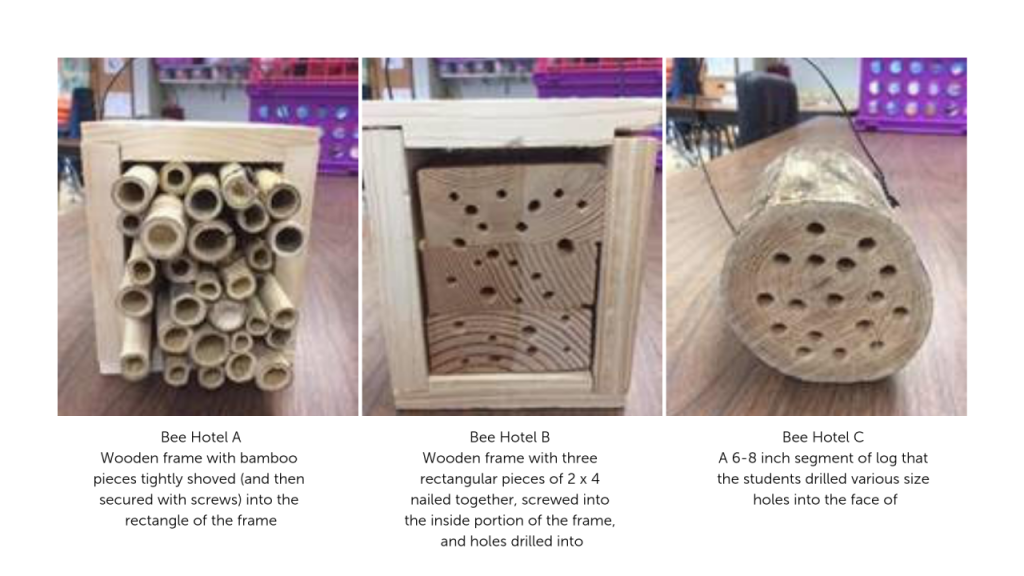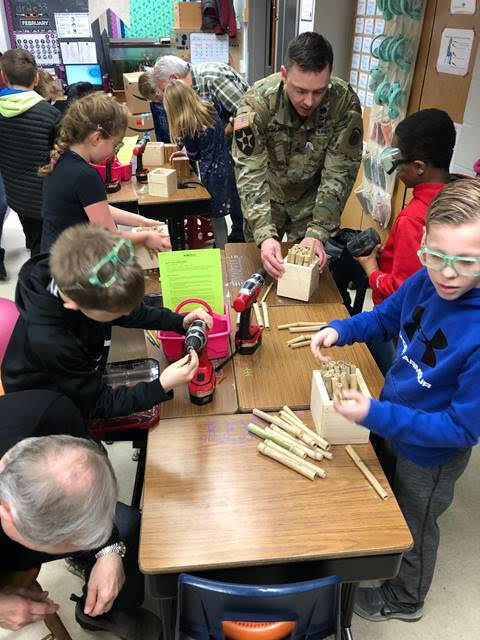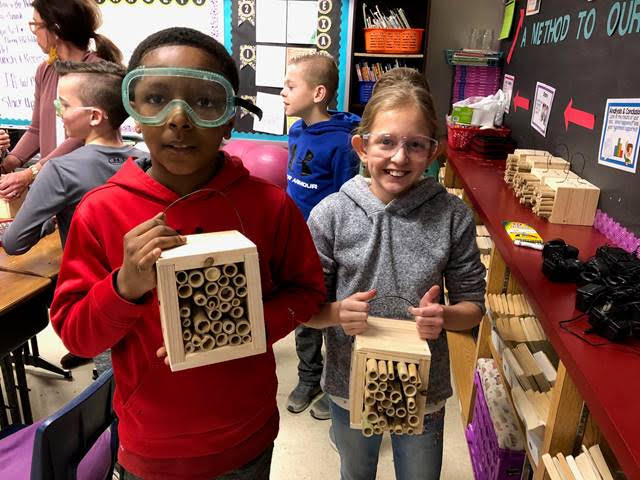By. Rachel Felous
This article was originally published on February 28, 2019 by Teton Science Schools. It’s reprinted here with permission from Teton Science Schools and the author. View the original article here.
It was over a snack time conversation that fourth grade Rock Bridge Elementary School teacher Caitlin Nichols first noticed her students’ interest in native bees. It was December and she and her students were casually discussing what was on their holiday wish lists. When Caitlin jokingly told them she had always wanted a bee hive for her yard, her students were instantly captivated. “Why don’t you have one already? What does a bee hive look like?” they asked. Ultimately, their conversation led to the bigger question—why are bees important? It was then that Caitlin knew she had the makings of a meaningful learner-centered, place-based project.
A Project Rooted in Training
For the past two years, Caitlin has been a part of her school district’s custom place-based education trainings led by Teton Science Schools’ Leslie Cook and other faculty members. These trainings were inspired by the school district’s 11 years of participation in TSS Field Education programming. The training, alongside her independent research on place-based learning through a University of Missouri science fellowship, WIPRO, has been integral to her success implementing place-based projects and using the community as her classroom. Columbia School District’s K-12 Science Coordinator, Mike Szydlowski, says, “Caitlin is doing an incredible job with place-based [implementation] not only in her classroom but [in] trying to urge others in her school, [too].”
From Classroom to Community
Over the course of the past six weeks, through a combination of research, conversations with bee experts, experimentations in design, and hands-on construction, Caitlin and her students have been building a deeper understanding of native bees in their community. They are preparing to present their findings to local constituencies. Inspired by her process, we asked Caitlin to share what goes into creating a full-fledged place-based project.
Researching native bees
When we returned to school after winter break, students immediately dove into the research portion of our project. For one hour each day over the course of two weeks, students visited the libraries—school and public—and used their iPads for research that will be presented through a combination of essays and public presentations.
Bringing in bee experts
As they researched, the students brainstormed a list of questions to ask bee experts. We invited three experts into our classroom—a guest speaker from the agriculture department from the University of Missouri, local bee connoisseur and District’s K-12 Science Coordinator Mike Szydlowski, and Carl Korschgen from the local Beekeepers Guild here in Boone County. Students were intrigued and very focused throughout the presentations. Interestingly enough, their attention was particularly focused on listening for misconceptions or facts that misaligned with what they already learned.
Designing prototypes
After hearing from the bee experts, we brought in other community members for support in designing our bee hotel prototypes. We met multiple times to try to develop a prototype that would allow design, creativity, and individuality for the students, but would also be streamlined enough to help 42 children (and their parents) assemble them in the 90 minute segment we had for the build. We researched multiple types of bee hotels and settled on three choices that we allowed the children to choose from.

Constructing mason bee homes
The students loved all parts of this build! Materials such as untreated scrap wood, nails, staples, and screws were donated and the frames were pre-constructed by community volunteers. Each student got the opportunity to use a hammer, an electric drill, and to work with an adult to build the bee hotel of their choice. Most students had never used power tools before and were given complete autonomy in the steps taken as long as their choices weren’t dangerous. Parents were given clear instructions on their role—to support and supervise—and were reminded that students were to be in charge of using the power tools and making decisions regarding materials and design.
Presenting their findings
The goal of this project is to share our knowledge of bees and encourage our community to work together to create a healthier environment for our native bee populations, and in turn, a healthier environment for our future human population. Students will share everything they’ve learned as well as hold a formal presentation on their personal opinions about why bees are important and what steps we should take to preserve their way of life. We are inviting people from all parts of the community: mechanics, electricians, caterers, business owners, bakers, candlestick makers, bankers, police officers, as many people from our City of Columbia that can make it (within reason, of course!).

Distributing the bee homes
In March, businesses and community members will be sent back into the community with a student-built bee hotel along with instructions and suggestions for how to display it at their place of business. At this time we are still building our list of community members, but we have several small business owners, a fleet supervisor, a caterer, a teacher, and an accountant who have all expressed interest in being involved.
Rock Bridge Elementary School is part of the Columbia School District in Columbia, Missouri. For the past 11 years, middle school students have been visiting Teton Science Schools to participate in Field Education programming and for the past three years district teachers have been developing skill sets in place-based education through custom professional development trainings led by Teton Science Schools’ faculty. Next year Columbia School District school, Fairview Elementary, will join the Place Network to continue their immersion into and implementation of place-based education.
Learn more about Place-Based Professional Development and Consulting for your school.
Learn more about the Place Network.
Author Bio
Rachel Felous is a storyteller, writer, and digital marketing guru. After almost five years as an educator, teaching place-based education in the Greater Yellowstone Ecosystem, she transitioned into entrepreneurial life where she now helps brands and organizations capitalize on their most powerful assets, their stories. When she’s not creating content, she enjoys rock climbing, adventuring outside, and teaching others about how to live a zero waste lifestyle.

